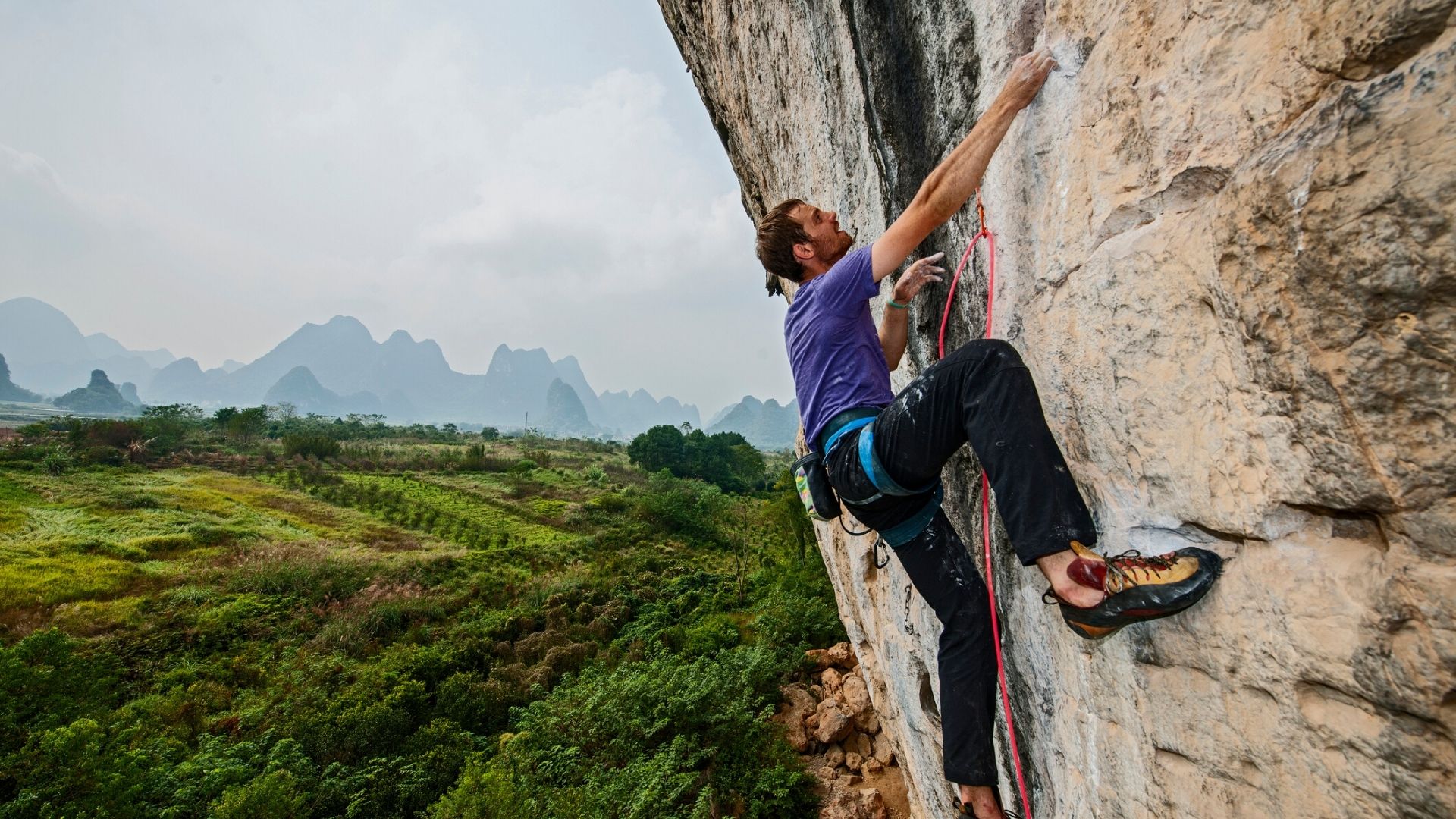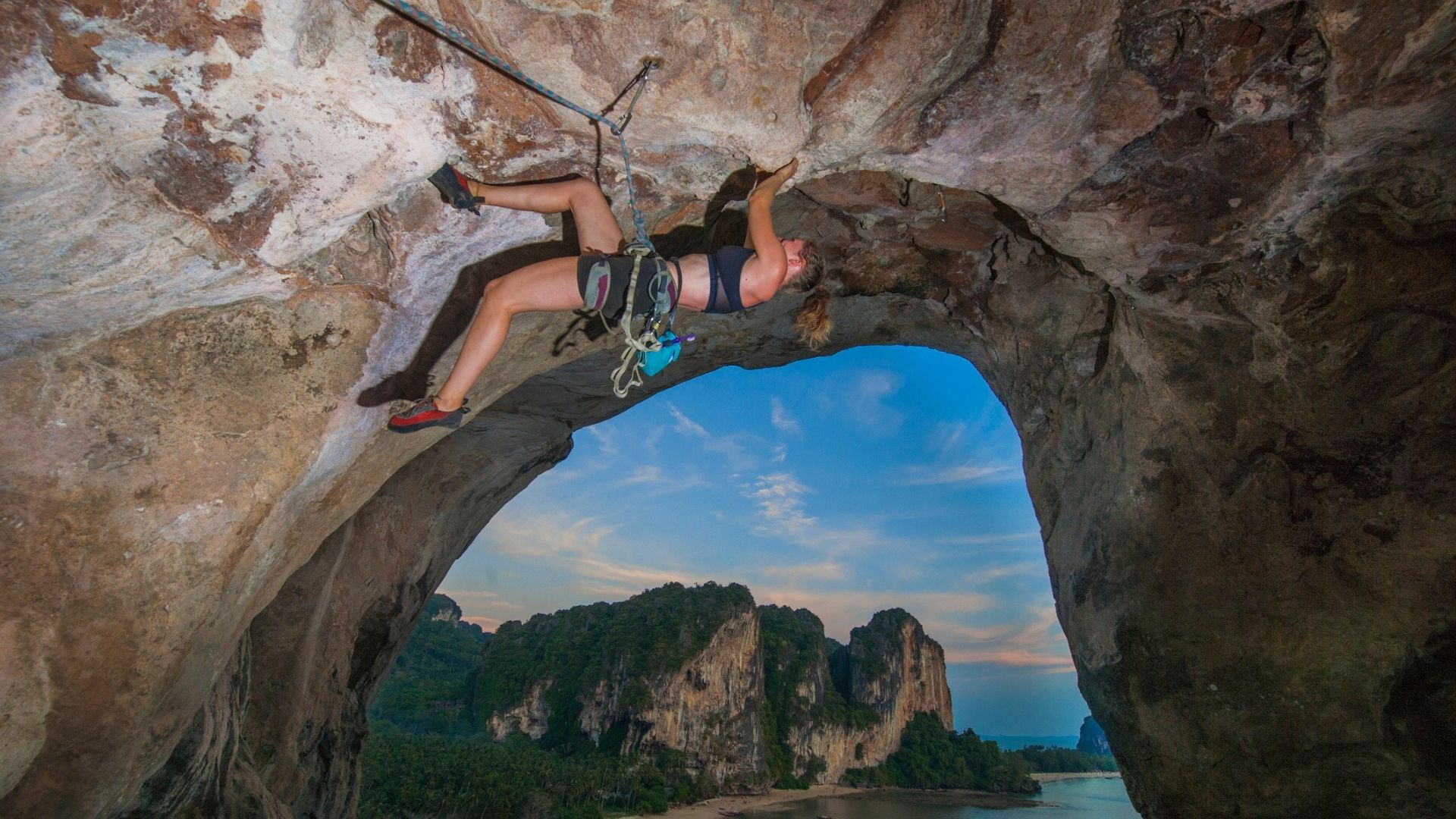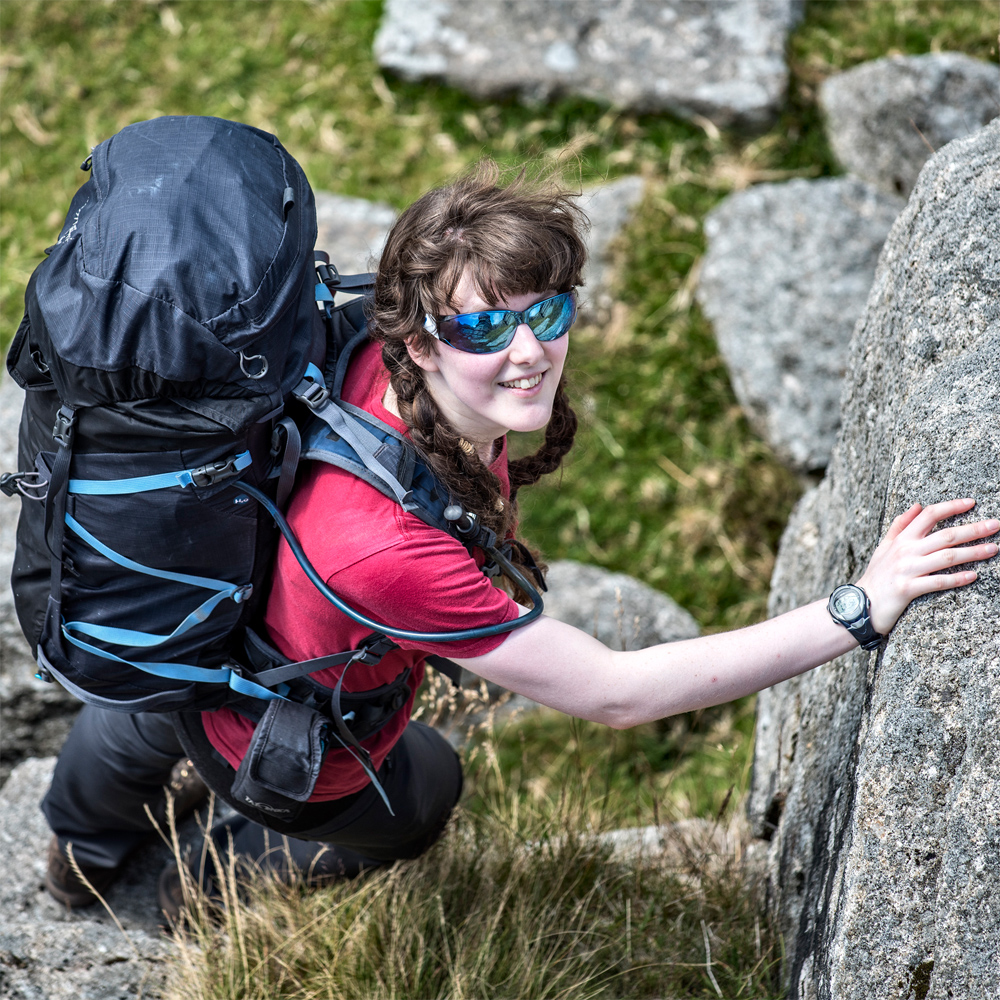Rock climbing for beginners: the big questions answered
Get an overview of the basics in this quick guide to rock climbing for beginners

Rock climbing is a way of getting up sheer rock faces or artificial rock walls that are too difficult to walk up. It’s for people who like gazing endlessly at unlikely rocky faces, like mountainsides or cliffs, wondering if they could go up that vertical spiky bit, rather than taking a perfectly good footpath.
For newcomers, rock climbing can seem hard to get into, or even understand. There is a lot of jargon to get through, but hopefully by the end of this rock climbing for beginners guide, you’ll be able to tell a belay from a carabiner.
What is rock climbing?

There are three main types of climbing: trad, sport and indoors. Of course there are many variations, like ice climbing (does what is says on the tin) and mixed climbing (where it’s half ice, half rock). There are also types of climbing – styles, you might say – like soloing where you climb without a rope. And bouldering, but we count that as a sport in its own right. Although yes, technically you are climbing a rock. So before anyone feels too left out, here’s a quick overview of the three main things people think of as “rock climbing”.
Indoor climbing is a bit like going to the gym. Or maybe a gym crossed with that crazy soft play area you used to go to for parties as a kid. All the walls inside a climbing centre are covered with brightly coloured holds, for you to clamber up the wall on. Each colour is a different route and someone has pre-set them for your entertainment and frustration, at a range of difficulty levels.
Sport climbing is outdoors, but still involves pre-set routes. Metal bolts have been drilled and fixed into the rock face so you don’t ever have to worry about placing protective gear. Simply clip into the bolts as you go, all the way to the top. You will be holding on to actual rock though.
Trad climbing (also called free climbing in the US) is what most people probably think of when they think of rock climbing. Trad is short for traditional, which is a bit like saying Proper Climbing to a friend down the pub. It’s how rock climbing was always done until sport climbing was invented in the 1980s. You arrive at the bottom of a clean rock face – be it a mountain, quarry or sea cliff – and climb up it. To do that, you need a way to keep yourself safe. With only a diagram of the route, or possibly not even that, you try to recreate someone else’s route, placing your own protective gear that you bring along with you. This being a guide to rock climbing for beginners, we’ll talk about exactly how people do this in a minute.
How does rock climbing work?

In simple terms, rock climbing is about ascending something far too difficult to walk up, without breaking yourself in the process. Very easy rock climbs are only a smidge harder than a scramble. Others involve getting your hands and feet into tiny dimples on an otherwise completely smooth rock face. There are too many different grading systems to go into what exactly counts as “hard” here, but it’ll look pretty obvious from the bottom. The less there is to hold onto – and the harder it is to reach those holds – the higher the grade.
All the latest inspiration, tips and guides to help you plan your next Advnture!
There are many different ways to do a rock climb itself. If you’re Alex Honnold (star of climbing movie Free Solo) you just go straight up the thing like a gecko. Most people would take a rope and a friend to hold on to the end of the rope, in case you fall.
Here’s how it works: imagine two people tied to opposite ends of a rope. One person starts climbing upwards. They are lead climbing, aka going first. As they get higher, it’s the person on the ground’s job to keep the rope between them taught. That way, if the leader falls off the route, they shouldn’t hit the floor.
Once the first person has reached the top, they sit down and the roles are reversed. The person at the top keeps the rope taught as the second person climbs. That second person is doing something called “seconding” (unsurprisingly). Seconding is not too different from something called top roping, where the rope is put through something at the top of the rock climb and run back down to the floor. It’s just the same setup, except the person keeping the rope taught is on the floor instead. That person is called the belayer, and the act of keeping the rope taut is called belaying.
In the original situation, when the second climber reaches the top of the route they have both climbed a pitch. If there’s more climbing to do, they can start all over again for a second pitch or more. This is called multi-pitch climbing. Otherwise, if they’ve reached the top of the climb, they can fist bump and return to the bottom.
What should I wear and what kit do I need?

In terms of what to wear, the key thing is to wear clothing appropriate for wherever you are, and that is easy to move in. For outdoor climbing, all the normal considerations you’d take for going hiking come into play. But you also need to make sure you’re not so tightly wrapped up that you can’t stretch for the holds. That’s true for both arms and legs. It’s also worth bringing an extra warm layer for while you’re sitting still belaying.
As for a specific rock climbing for beginners kit list, your three key items are: a climbing helmet, a harness and a belay device on a carabiner. You’ll also need a climbing rope per pair of people. Unless you’re doing some very hardy trad climbing, you’ll also want to bring rock climbing shoes – which look like a combination of plimsolls and ballet shoes, and are more specialized than the best approach shoes. They rubbery and fit a little too tightly to your feet, which helps you feel the holds and stick to them a bit better.
If you’re climbing indoors that’s all you’ll need. You can even get started without a rope (there are plenty of set up top ropes at climbing walls). For sport climbing, you’ll have to start venturing into the world of “gear”, also called “protection”. Luckily it’s pretty simple for sport climbing. You just need pairs of carabiners, attached by a short fabric sling. That way you can clip one side into the bolt and the other onto your rope. Simple.
For trad climbing there are all sorts of weird and wonderful pieces of gear to help protect your climb. Basically, if there’s a groove or a crack in the rock that someone’s wanted to place protection in, there’s a tool to fit in that hole. Each has its own name, like cams, nuts and hexes. You’ll also want a selection of slings, carabiners and a nut key to get the gear back out. Whatever you decide to take with you – and it’ll be different for each climb – is called your rack.
How safe is rock climbing?

Rock climbing is as safe as your gear placement, your trust in your partner and your surety in the rock. At least, those are the main things that can go wrong. The whole point of placing gear on a route is to stop you from injuring yourself if and when you fall. But if you haven’t put it in well, it may rip out as you fall so you fall further. Similarly, if you haven’t put in enough gear, you might fall a long way before anything can stop your fall. This also still goes for sport climbing because bolts call fall out and gear can fail.
If your partner is the kind of person who doesn’t pay attention while you’re climbing (tip: get a better partner) then they might not belay properly or catch your fall. They might let the rope run through their belay device and then there’s nothing to stop you hitting the deck.
Finally, if you go to a climbing wall you’ll see signs everywhere declaring, “Holds may spin!” Outdoors, you’re relying on the rock you’re holding to stay attached to the face. Sometimes there’s no way it’ll ever come loose. Others are a bit more sketchy. You also want to watch out for anything falling off above you. A helmet will help, but if anyone shouts “Below!” as a warning, you want to get out of the way ASAP.
Where can I have a go? How do I get started?

The easiest way to get started is to find a club, a willing friend or a qualified instructor. It’s possible to start rock climbing indoors or outdoor, although many people nowadays do seem to start at their local climbing wall. You’ll want to start off seconding or top roping, gradually building up to leading routes.
An adventure writer based on Dartmoor, England, Emily is an active member of Mountain Rescue and a summer Mountain Leader, but loves all things adventure – before her third birthday she had lived on three continents. Founder of Intrepid magazine, she works to help break stereotypes about women in the outdoors. Her expeditions have included walking all Dartmoor’s 119 tors in a single two-week outing, cycling to Switzerland and back, and riding the Rhine from source to sea.

